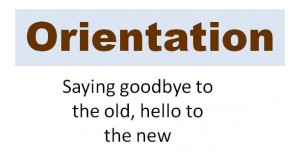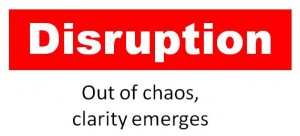 Autumn has arrived in West Michigan and the leaves are changing. It’s a sort of in-between time for fall color – no longer the lush green of summer, but not quite the brilliant color blast we’ll expect in a few weeks.
Autumn has arrived in West Michigan and the leaves are changing. It’s a sort of in-between time for fall color – no longer the lush green of summer, but not quite the brilliant color blast we’ll expect in a few weeks.
As I sat on my deck this past weekend, looking at one of our Maple trees, I had this thought: look at that tree in the midst of its transition. Hmmm, I wonder if the tree is freaking out about its colors changing.
Mr. People Equation says it’s silly to anthropomorphize our landscaping.
I know, I know. . . trees don’t have feelings. But humans do. And when it comes to changes in the workplace, people can’t count on the dependable, cyclical changes like deciduous trees can. When humans hear about an announcement of organizational change, they have to tough out the transition with a series of unknowns and potential irritants.
Here’s a simple conceptual model that helps people move through an organizational change. It’s helpful because it sorts their experience into two buckets – one for the company and one for themselves. Years ago, I wrote about this segmentation in the book Critical Issues in HRD. I said
Organizational change occurs within an organization as a whole. It is a macro-level view of change that takes into account the systemic nature of change [and its impact on the organization].
I went on to describe intrapersonal change as
the highly personal, human aspect to the element of change. Intrapersonal change is the way that each person uniquely reacts when [he or she is connected to an] organizational change.
(pages 52 – 53)
Over the years, I’ve expanded on this idea of intrapersonal change. The illustrations below helps people think about their internal reactions to an external event. This is positioned as a series of “phases”, which occur over a period of time.
 Orientation – this is the phase where you first become aware of what’s going to change. What is “new”? Is there anything from the “old” staying? Depending upon how much you liked the “old” you may experience a feeling similar to mourning a loss.
Orientation – this is the phase where you first become aware of what’s going to change. What is “new”? Is there anything from the “old” staying? Depending upon how much you liked the “old” you may experience a feeling similar to mourning a loss.
 Disruption – you’ll know you’ve reached this phase when it gets chaotic (or a least there is some confusion.) This is the “sorting it out” phase. Eventually you begin to get clarity on your role in the change and how you need to proceed moving forward.
Disruption – you’ll know you’ve reached this phase when it gets chaotic (or a least there is some confusion.) This is the “sorting it out” phase. Eventually you begin to get clarity on your role in the change and how you need to proceed moving forward.
 Assimilation – when you finally start to feel as if the change is now the “new normal” you’ve arrived at assimilation. You have mentally processed what needs to be different as it relates to the change. In the best case scenario you are “at peace” with the change, but you may also be simply “accepting” with the change – not loving it, but OK with moving forward.
Assimilation – when you finally start to feel as if the change is now the “new normal” you’ve arrived at assimilation. You have mentally processed what needs to be different as it relates to the change. In the best case scenario you are “at peace” with the change, but you may also be simply “accepting” with the change – not loving it, but OK with moving forward.
Depending upon the complexity and intensity of the change, this series of reactions may range from a few days to a few months. I’ve found that by helping people name the various internal reaction they’re having, they can better cope with any feelings of unease or frustration. They can say to themselves, “OK, this is the disruption phase, chaos is part of the deal.”
This simple three-part model for change can definitely help you personally adjust to an organizational change. And, if you lead a team, you can show them this model to help team members navigate an impending change up. Remember, the trees “know” that their transition comes around every autumn; people don’t have the luxury of that knowledge.
Discussion point: Think about a significant organizational change you experienced. As you reflect on the change as it unfolded, can you recall your reactions? In what ways did they tend to line up with the three-phase model listed above?
Jennifer,
I love this! Partially because I just love fall: The colors, the smells, the warm blankets, the baking!
Professional and personal seasons of change can be fun but they never stir up the same sense of anticipation and enjoyment that nature does!
I love your three steps: orientation, disruption, assimilation!
…And wondering if organizations rolled out change with steamy drinks, spicy candles, fuzzy blankets and bright colored leaves if people would get more excited about the change that is coming?!
Chery
Hi, Chery,
I love fall too!
David,
Nicely said, thanks for adding to the conversation!